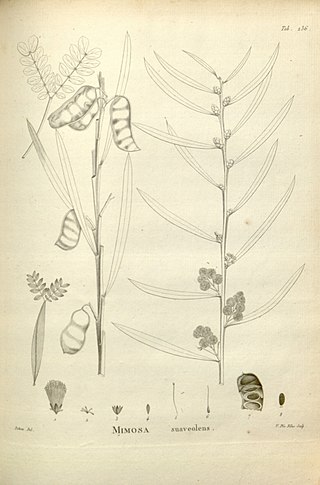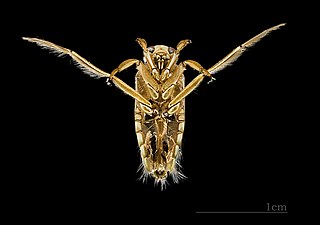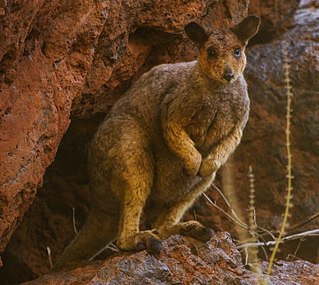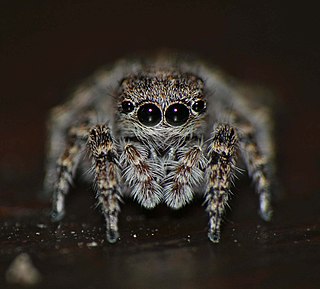
Weasels are mammals of the genus Mustela of the family Mustelidae. The genus Mustela includes the least weasels, polecats, stoats, ferrets, and European mink. Members of this genus are small, active predators, with long and slender bodies and short legs. The family Mustelidae, or mustelids, is often referred to as the "weasel family". In the UK, the term "weasel" usually refers to the smallest species, the least weasel (M. nivalis), the smallest carnivoran species.

Pygopodidae, commonly known as snake-lizards, or flap-footed lizards, are a family of legless lizards with reduced or absent limbs, and are a type of gecko. At least 35 species are placed in two subfamilies and eight genera. They have unusually long, slender bodies, giving them a strong resemblance to snakes. Like snakes and most geckos, they have no eyelids, but unlike snakes, they have external ear holes and flat, unforked tongues. They are native to Australia and New Guinea.

The common whitethroat or greater whitethroat is a common and widespread typical warbler which breeds throughout Europe and across much of temperate western Asia. This small passerine bird is strongly migratory, and winters in tropical Africa, Arabia, and Pakistan.

Phyllodes are modified petioles or leaf stems, which are leaf-like in appearance and function. In some plants, these become flattened and widened, while the leaf itself becomes reduced or vanishes altogether. Thus the phyllode comes to serve the purpose of the leaf. Some important examples are Euphorbia royleana which are cylindrical and Opuntia which are flattened.

Notonectidae is a cosmopolitan family of aquatic insects in the order Hemiptera, commonly called backswimmers because they swim "upside down" (inverted). They are all predators and typically range from 0.5 to 1.5 cm (0.2–0.6 in) in length. They are similar in appearance to Corixidae, but can be separated by differences in their dorsal-ventral coloration, front legs, and predatory behavior. Their dorsum is convex, lightly colored without cross striations. Their front tarsi are not scoop-shaped and their hind legs are fringed for swimming. There are about 350 species in two subfamilies: Notonectinae with seven genera, and Anisopinae with four genera. Members in the former subfamily are often larger than those in the latter.

Aromobates, sometimes known as the skunk frogs, is a genus of frogs from the Andes of Venezuela and Colombia. Originally a monotypic genus consisting of the skunk frog, Aromobates nocturnus alone, it was later expanded to include Nephelobates. These frogs are difficult to differentiate from Allobates without using molecular markers.

The rock-wallabies are the wallabies of the genus Petrogale.
Mastacembelus is a genus of many species of spiny eel fish from the family Mastacembelidae. They are native to Africa and Asia. Most are found in rivers and associated systems, but there are also species in other freshwater habitats and a particularly rich radiation is found in the Lake Tanganyika basin with 15 species. A few species can even occur in brackish water.

The canyon bat, also known as the western pipistrelle, or American parastrelle is a species of vesper bat. It is found in Mexico and in the western United States. The species has historically been placed in the genus Pipistrellus, but molecular evidence does not show any close relationship with that genus, and accordingly it was classified into its own genus, Parastrellus, in 2006.
Handleyomys rostratus, also known as the long-nosed oryzomys, long-nosed rice rat, or rusty rice rat is a species of rodent in the genus Handleyomys of family Cricetidae. It is found in Belize, El Salvador, Guatemala, Honduras, Mexico, and Nicaragua. It is nocturnal and is found in forests at elevations above sea level to 1200 meters. The Handleyomys rostratus attains its highest level of development in south and Central America. High rates of deforestation and habitat destruction are the biggest threat to the Handleyomys rostratus.
Aromobates alboguttatus is a species of frog in the family Aromobatidae. It is endemic to the Andes in the Táchira and Mérida states, western Venezuela.The synonymy of Colostethus inflexus is still not fully resolved.

The black-tailed trogon is a species of bird in the family Trogonidae, the quetzals and trogons. It is found Panama and northern South America.

Salarias is a genus of combtooth blennies found in the Indian and Pacific oceans.

Salarias alboguttatus, the whitespotted blenny, is a species of combtooth blenny found in coral reefs in the Pacific Ocean and Indian Ocean. This species reaches a length of 9 centimetres (3.5 in) TL.

Jerzego is a spider genus of the jumping spider family, Salticidae, with three described species native to Asia.

Eumorphus is a genus of beetles belonging to the family Endomychidae.
Baliesthes alboguttatus is a species of beetle in the family Cerambycidae, and the only species in the genus Baliesthes. It was described by Fairmaire in 1885.

Langelurillus furcatus is a species of jumping spider in the genus Langelurillus that lives in Kenya and Tanzania. It was first described in 2000 by Wanda Wesołowska and Anthony Russell-Smith. The spider is small, with a carapace that is between 1.8 and 2.4 mm long and an abdomen between 1.7 and 2.7 mm long. The male is smaller than the female. It has a dark brown carapace, although the female is lighter, that has no markings. The female abdomen is dark russet with a pattern of black and white patches and the male abdomen is dark fawn with an indistinct light pattern. It has orange legs with dark patches, the female also having dark rings on its legs. The spider is similar to other related species, particularly Langelurillus alboguttatus, but can be distinguished by its two tibial apophysis, which make a V-shape. The epigyne has a deep depression that is plugged with a waxy secretion.

Langelurillus alboguttatus is a species of jumping spider in the genus Langelurillus that lives in Tanzania. It was first described in 2000 by Wanda Wesołowska and Anthony Russell-Smith. Only the male has been identified. The spider is small, with a carapace typically 1.7 mm (0.067 in) long and an abdomen 1.4 mm (0.055 in) long. The dark brown carapace is plain and the yellow abdomen has a single fawn stripe, while the legs are short and yellowish-orange. It is similar to other related species, particularly Langelurillus furcatus, but can be distinguished by the presence of the three tibial apophysis, or spikes, on the pedipalp.

Trogus is a genus of parasitoid wasp found in the Holarctic and Neotropic regions. It is placed in the subfamily Ichneumoninae and the tribe Ichneumonini. Trogus species are parasites of larvae and pupae of the swallowtail butterfly family, Papilionidae. The genus consists of twelve extant and one extinct species.
















